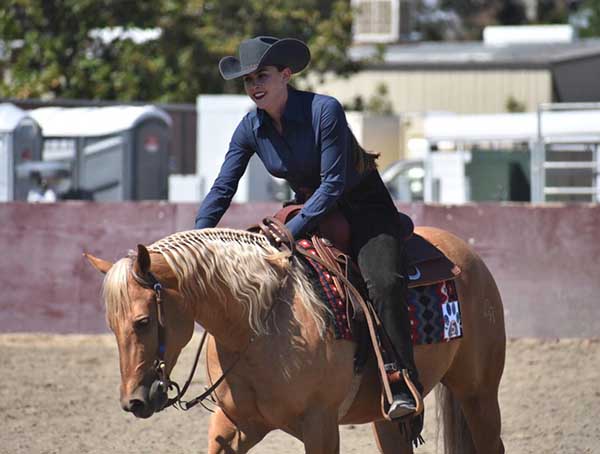Athlete and Animal: The Process of Finding the Right Horse For NCEA Programs
By: Alex Riley
WACO, Texas – Monica Ellis had witnessed the situation first-hand. During her four-year riding career at Delaware State, Ellis went to countless practices where 24 equestrian athletes juggled time in the saddle on about 20 horses.
A year after graduating, Ellis wanted to do something to express her gratitude for the opportunity she was given with Hornets. With help from her family, she was able to find a Reining horse and donate it back to the program.
“My dad knows how it impacted my life and how badly I wanted to compete,” Ellis said. She’s currently a grad assistant in DSU’s athletic communications office. “It really was just a thank you to the program for all they had done for me. Reining and Horsemanship is hard, just because of the area we’re from. The East Coast primarily has Hunt Seat riders, and it’s hard to get people to come from the West Coast or Midwest to Delaware. So even adding just one horse to the program gives it that much more credibility.”
Without that type of generosity, NCEA programs wouldn’t be able to compete or even practice.
Because of the costs associated with buying and maintaining a herd, schools across the country rely on three types of horses to fill their stables – donations given on a permanent basis, free lease animals that are temporarily on loan, and sometimes horses that come with athletes when they enroll in school.
Donations are the ideal way to acquire a horse, but not every animal is cut out for life in NCEA. In addition to being of an age that will allow it to compete for several years, the horse has to be sound, both physically and mentally as the collegiate competition setting isn’t for just any animal.
“We get phone calls all the time, and we’re happy to talk to folks about what they have. If it doesn’t suit us, it might not be an NCEA type donation, but it might be suitable for another type of program that takes donations,” South Carolina coach Boo Major said. She has 25 horses at her disposal, 13 that compete in Western and 12 that are Hunt Seat. “If we like the horse and the horse is sound, we’re going to keep the horse as long as we possibly can because there’s just nothing better than a wonderful horse for your program.”
Each program needs four different types of horses to fulfill their needs – animals capable of competing on the flat, over fences, in Horsemanship or Reining. While some horses can do on the flat and over fences, Reining horses are the most difficult and expensive to come by.
No matter the discipline, all horses require high quality care by the school to ensure they are ready for training and competition. That care often goes beyond their time in competition.
“Our donated and loaned horses are the top priority for our program. We have excellent farrier and vet support to help these animals perform at their best in both practices and competitions,” SMU coach Carol Gwin said. “We stay in touch with their donors throughout the horse’s time in the program. In addition, we always assist in finding these horses a great retirement homes when the time comes. They are part of our team and family.”
Like any other sport, NCEA teams need space to practice and compete. Unlike basketball or football, a room or building isn’t enough to hold all the equipment they’ll need.
Some schools, like SMU and Delaware State, lease off campus space to house their horses and train at. Sweet Briar College is lucky enough to have a facility on campus with the capability of keeping nearly 80 horses, although the Vixens have a much more manageable 50 on-hand. In Georgia, the former dressage training facility for the 1996 Olympics is now home, complete with hedges surrounding the competition arena, a nod to the famous set up for home football games.
“It’s the first and only purchase of land the athletic department has made up until this point,” Georgia coach Meghan Boenig said. “We just wanted to be able to have more frequent practices at more ideal times and it really pushed us in the direction of having our own facility.”
No matter the location they’re kept or how many, every NCEA program strives to have the best horses available to practice and compete on. The ultimate goal, of course, is to win the elusive national championship. But there’s more to it than that.
“The welfare of the horse is always the utmost importance. If the horses aren’t healthy and happy, they don’t ride and compete well,” Delaware State coach Jennifer Ridgely said. “It’s the same thing with the kids. I always say that I have two rosters – I have a roster of equine athletes and I have a roster of human athletes. And you’ve got to take care of their needs emotionally and competition wise.”











